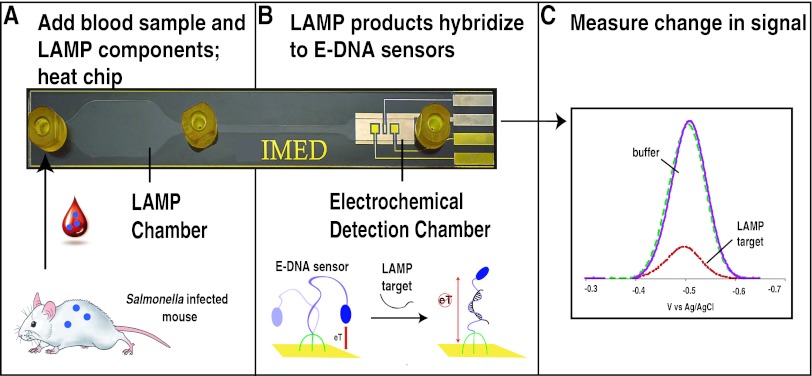Fig 1.
Overview of the IMED chip. (A) The IMED chip consists of an amplification chamber that supports LAMP, a rapid amplification method that produces single-stranded products for hybridization-based detection. In the approach, bacteria from whole unprocessed blood of infected animals are added to the isothermal amplification chamber along with amplification reagents and heated at 65°C for 90 min. The products, which now include LAMP target amplicons, are then pushed into the electrochemical detection chamber via the injection of buffer. (B) The chamber contains a multiplexed electrode array (here biplex) supporting the simultaneous sequence-specific electrochemical detection of LAMP products derived from S. Typhimurium and S. Choleraesuis. The E-DNA probes used to sense the LAMP amplicons comprise a linear, redox-reporter-modified DNA molecule covalently attached to a gold surface. When the complementary LAMP target amplicons are absent, the flexibility of this single-stranded probe ensures that the end-located redox reporter collides freely with the electrode surface, producing a large current. (C) Conversely, upon hybridization to the target amplicon, the probe becomes rigid, restricting movement of the redox reporter and reducing the observed current. The potentials reported here and throughout this publication are relative to an Ag/AgCl reference electrode.

